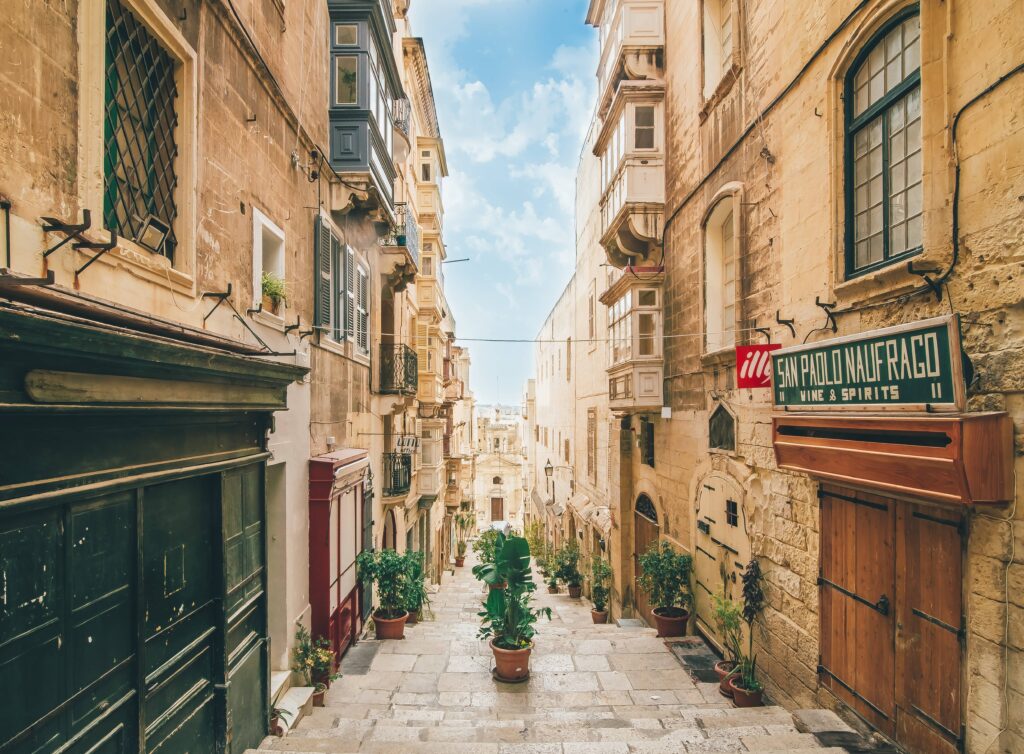Stroll through the streets of Valletta, Malta’s capital, and you are just as likely to find an impromptu dance performance as you are a historical relic. A delicious fusion of old and new, the British colonial footprints are still visible atop the underlying ancient history.
Akin to an open-air museum, Valletta’s delightful mix of architecture and culture led to its crowning as a UNESCO World Heritage Site in 1980. Fast forward a few decades and the city is fast becoming a hub of bohemian life, where the great, the good and the downright trendy gather to pour over the island’s latest artistic, theatrical and musical offerings.
Dominated by the almost overbearing cultural legacy of the Knights of St John, who founded the city in 1566 to protect Malta from further attack, it was named after Grand Master la Valette, who defended the islands successfully during the Great Siege of Malta in 1565. Intended as a place of culture not just a fortress, the Citta’ Umilissima ‘city built by gentlemen for gentlemen’ has laid itself open to outsiders and been influenced by them all, while retaining its original grandeur and distinctly Mediterranean feel.
Awarded the prestigious title of European Capital of Culture 2018, Valletta is in a state of flux. Experiencing a regeneration to highlight its incredible heritage while involving future generations, the city is constantly reinventing itself and becoming increasingly culturally relevant.
Built on the Sciberras peninsula, an arid tongue of land situated between two natural harbours, Valletta’s aptly named Grand Harbour is now the stunning backdrop to several world-renowned festivals, including the highly anticipated Malta Arts Festival, which showcases a sublime mix of music, theatrical and dance performances.
Old music halls are being converted into wine bars and independent art galleries and boutiques are springing up where once there was only urban decay, as a breath of fresh air blows through the streets of the city. One of the most famous streets in Valletta is Strait Street which was, until the mid-twentieth Century, the favourite destination of military men who docked in the harbour. They frequented the many rather unsavoury bars and restaurants of the street where ‘women of the night’ were on hand to, ahem, help the sailors have a good time.
Nicknamed ‘The Gut’, due to its reputation as the seedy but entertaining underbelly of the city, Strait Street experienced a steep decline in 1964 after Malta gained independence from Britain, whose servicemen no longer had cause to visit, and from the 1970s, it was abandoned. Pay a visit to Strait Street now in the first strains of its gentrification and you will find a hodgepodge collection of trendy little bars which are well worth a drink in.
Tear yourself away from the underbelly and make your way to St John’s Street for an altogether more wholesome experience and gaze at the awe-inspiring spectacle that is St John’s Co-Cathedral; a stunning example of high Baroque architecture. Commissioned in 1673, the building’s austere façade belies the extravagance within. As one of Malta’s best kept secrets, the interior of this grand cathedral is best left as just that – something to be experienced, not read about. But when you do visit, look out for the famous Caravaggio masterpiece, The Beheading of Saint John the Baptist, the only piece in existence signed by the artist.
Valletta is a city of contradictions, where the historic and the new-age coexist. Its nomination as Capital of Culture 2018 has cemented its legacy and importance in Europe and cast the spotlight onto this small yet powerful island. Experience the vice, the mystery and the legend for yourself and follow in the footsteps of the Knights who never witnessed this gentleman’s city transform into a city of the people.




